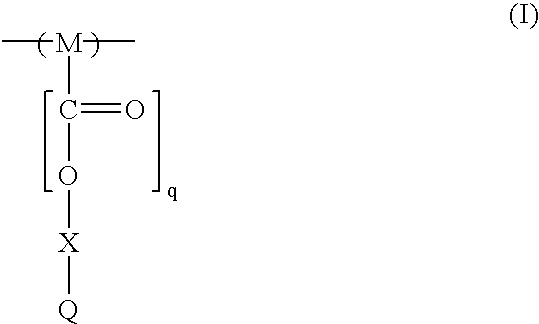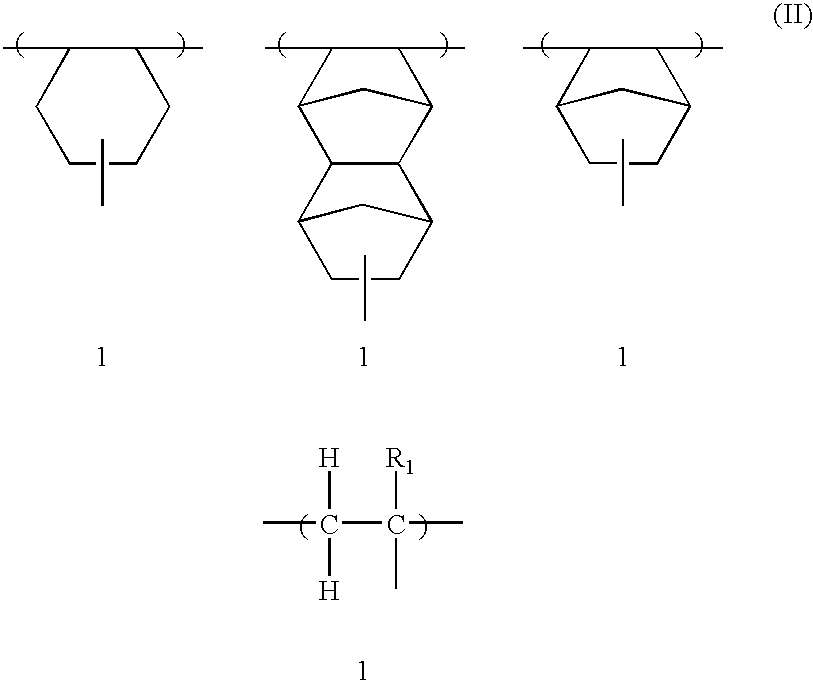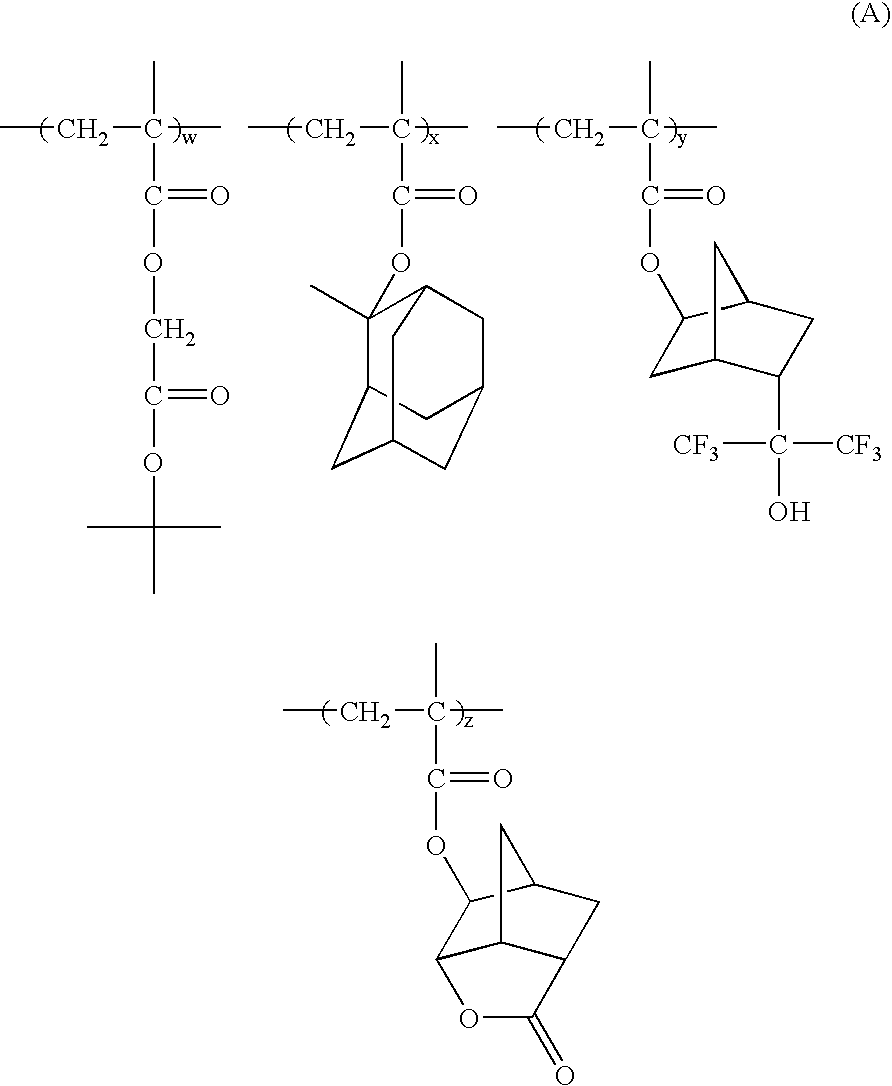193nm resist with improved post-exposure properties
a post-exposure and resist technology, applied in the microelectronics industry, can solve the problems of inability to obtain finer resolution, inability to produce smaller devices, and inability to use photoresist compositions at the heart of current 248 nm lithographic processes, etc., to achieve good exposure dose latitude, reduce post-exposure bake fluctuations, and high resolution lithographic performance
- Summary
- Abstract
- Description
- Claims
- Application Information
AI Technical Summary
Benefits of technology
Problems solved by technology
Method used
Image
Examples
synthesis example 1
Synthesis of t-butyl-2-methacryloyloxyacetate (C1-tBE) Monomer
[0057]Methacrylic acid (8.06 g, 0.10 mole), t-butyl bromoacetate (19.50 g, 0.10 mole) and 1,8-diazabicyclo[5.4.0]undoc-7-ene, DBU, (15.20 g, 0.10 mole) and 150 ml toluene were combined in a 500 ml 3-neck flask equipped with condenser, nitrogen inlet, thermometer and magnetic stirrer bar. The reaction mixture was stirred at room temperature for one hour. The reaction was continued at 90° C. overnight under a blanket of N2 flow. The mixture was cooled to room temperature and the salt was removed by filtration. The toluene solution was washed with 75 ml saturated NaCl solution and 2×75 ml Dl-water respectively before dried on MgSO4 overnight. The solid was filtered out and the toluene was removed at rotavap. An oily residue was distilled to a final clear liquid at reduced pressure.
synthesis example 2
Synthesis of C1-tBE:NLM Copolymer
[0058]T-butyl-2-methacryloyloxyacetate, “C1-tBE” (7.5 grams, 0.037 mole), norbornenelactonemethacrylate, “NLM” (12.48 grams, 0.056 mole), 2,2′-azobisisobutylonitrile initiator (0.90 grams, 6.00% total moles), 95 ml of tetrahydrofuran and 50 ml of ethyl acetate were combined in a 250 ml 3-neck round bottom flask equipped with condenser, thermometer, nitrogen inlet and a magnetic stirrer bar. The reaction solution was stirred at room temperature and bubbled with N2 flow for one hour prior turning the heating mantle on. The polymerization was carried out at 70° C. for 14 hours with a blanket of N2 flow. The solution was cooled and added drop wise to 1200 ml stirring methanol. The mixture was stirred overnight before filtration. The copolymer which was collected on the filter was air dried for a few hours before the final drying at vacuum oven at 65° C. The yield was 89%. C13 NMR confirmed the composition of the polymer to be 37:63 (C1-tBE:NLM). GPC indi...
synthesis example 3
Synthesis of C1-tBE:NLM:MAdMA Terpolymer
[0059]T-butyl-2-methacryloyloxyacetate, “C1-tBE” (1.38 grams, 0.0074 mole), methyladamantylmethacrylate, “MAdMA” (1.76 grams, 0.0074 mole), norbornenelactonemethacrylate, “NLM” (5.88 grams, 0.0224 mole), 2,2′-azobisisobutylonitrile initiator (0.40 gram, 6.75% total of moles), 40 ml of tetrahydrofuran, and 20 ml of ethyl acetate were combined in a 250 ml 3-neck, round bottom flask equipped with condenser, thermometer, nitrogen inlet and magnetic stirrer bar. The mixture was stirred at room temperature and bubbled with N2 flow for 45 minutes prior turning the heating mantle on. The reaction was conducted for 14 hours at 70° C. with a blanket of N2 flow. Then the reaction solution was cooled to room temperature and added drop wise to 500 ml of stirring methanol. The resulting slurry was stirred overnight before filtration. The solid was collected from the filter and air dried for five hours. The final drying was carried out in a vacuum oven at 65...
PUM
| Property | Measurement | Unit |
|---|---|---|
| Nanoscale particle size | aaaaa | aaaaa |
| Weight | aaaaa | aaaaa |
| Solubility (mass) | aaaaa | aaaaa |
Abstract
Description
Claims
Application Information
 Login to View More
Login to View More - R&D
- Intellectual Property
- Life Sciences
- Materials
- Tech Scout
- Unparalleled Data Quality
- Higher Quality Content
- 60% Fewer Hallucinations
Browse by: Latest US Patents, China's latest patents, Technical Efficacy Thesaurus, Application Domain, Technology Topic, Popular Technical Reports.
© 2025 PatSnap. All rights reserved.Legal|Privacy policy|Modern Slavery Act Transparency Statement|Sitemap|About US| Contact US: help@patsnap.com



